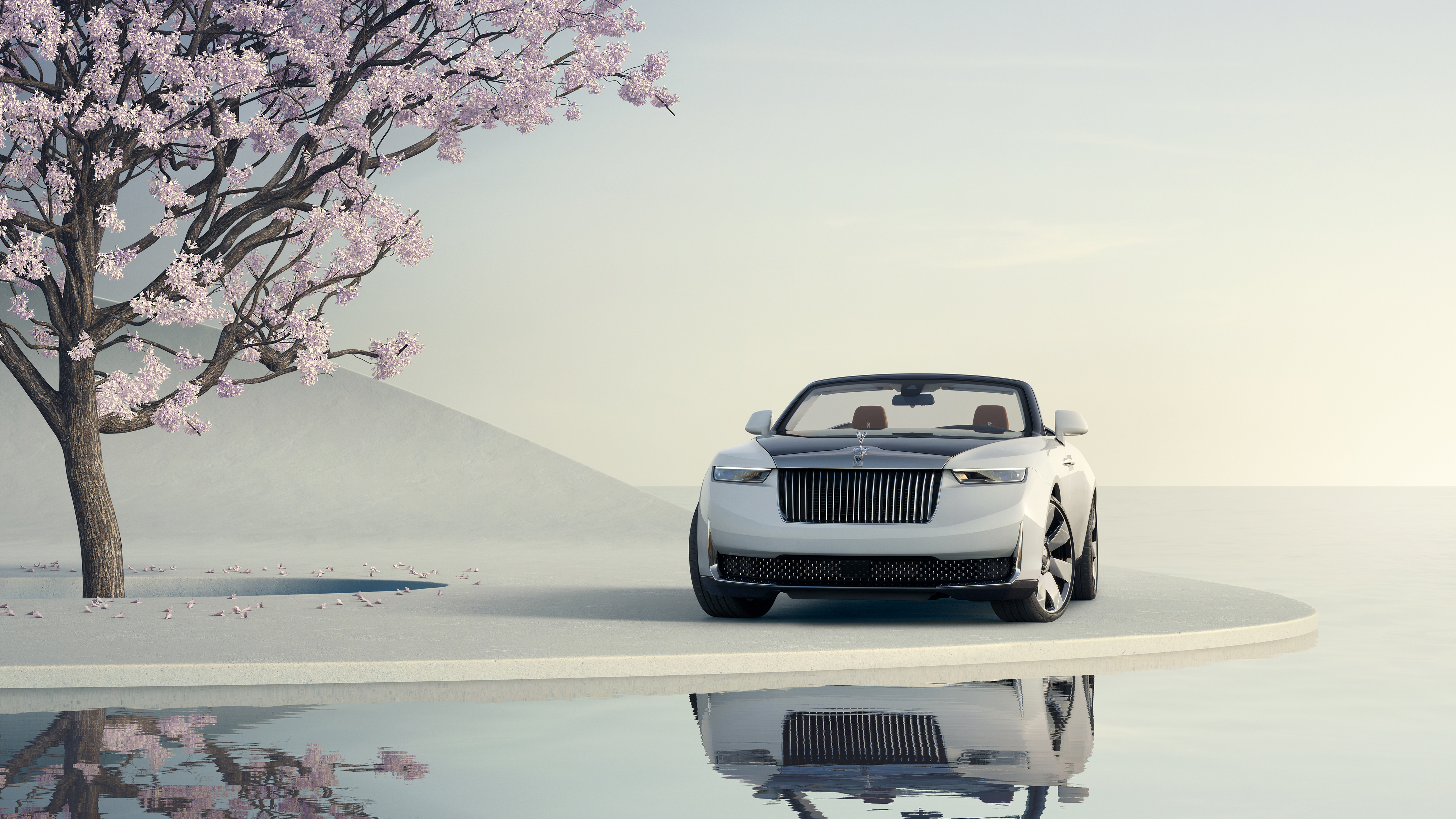
Tranquility and Rolls-Royce go hand in hand. The luxury automaker is known for its large yet logic-defyingly silent engines and suspension systems so perfect that the vehicles they carry don’t really drive — they sort of glide along. So it’s only natural that a vehicle sitting at the pinnacle of Rolls-Royce design, while also radiating the kind of odd spiritual qualities the best Rolls-Royces are known for, is named after Arcadia — the “Heaven on Earth” of ancient Greek mythology.
A glance at the grill tells you it’s unmistakably a Rolls-Royce, even if the overall body shape is unique. It’s the first roadster-style body in the company’s modern history. The theme of tranquility fits with the gentle ride and silent powertrain, and the wood paneling makes it look a little boat-like and matches many people’s Rolls-Royce driving experience. However, to see what truly sets it apart, you have to blow the clouds aside and look a little closer.

The looks aren’t just for show
While the Arcadia Droptail is indeed a Venus-like beauty, there are a lot of smarts backing up the looks. We’re talking carbon fiber weaving techniques ripped straight from Formula One. Its paint is laced with glass and aluminum particles of specific shapes and sizes, so the vehicle has an exact ethereal shimmer. The paint itself is a custom tone of white, and that level of customization repeats throughout. Even the color of the leather used on the seats is unique and developed purely for this one-off vehicle.
The amount of time and effort you’d expect to go into one of the world’s most desirable bespoke vehicles is evident, too. Those wooden sections alone took around 8,000 hours of master craftsmanship to create.

It’s not for us mortals, unfortunately
We’re very used to writing about limited runs of vehicles, and as things stand, there is a total of one Arcadia Droptail in the world. It’s a custom job commissioned by one of the firm’s clients, and it was handed over during a private ceremony in Singapore. Pricing hasn’t been announced, but we’d imagine it sits somewhere between the GDP of a small country and that of a medium-sized nation. Several outlets are making guesses around the $30 million mark, which would make the Arcadia Droptail one of the most expensive vehicles ever sold.
If you do happen to have the entire Belgian economy in your bank account, then there’s a chance that Rolls-Royce will create a similar masterpiece, tailored to your own personal specifications, for you somewhere down the line. However, it may not be part of this run of Droptails.
Editors' Recommendations
- 2024 Toyota Land Cruiser: Tech, off-road chops, pricing, and more
- Bugatti’s next hypercar will feature a V16 engine
- The Maserati GranCabrio: The Trident gives its GranTurismo a Spyder variant
- Aston Martin delays launch of its first EV, says drivers don’t want electric cars
- Hennessey supercharges the C8 Corvette Stingray: Fast just got faster




